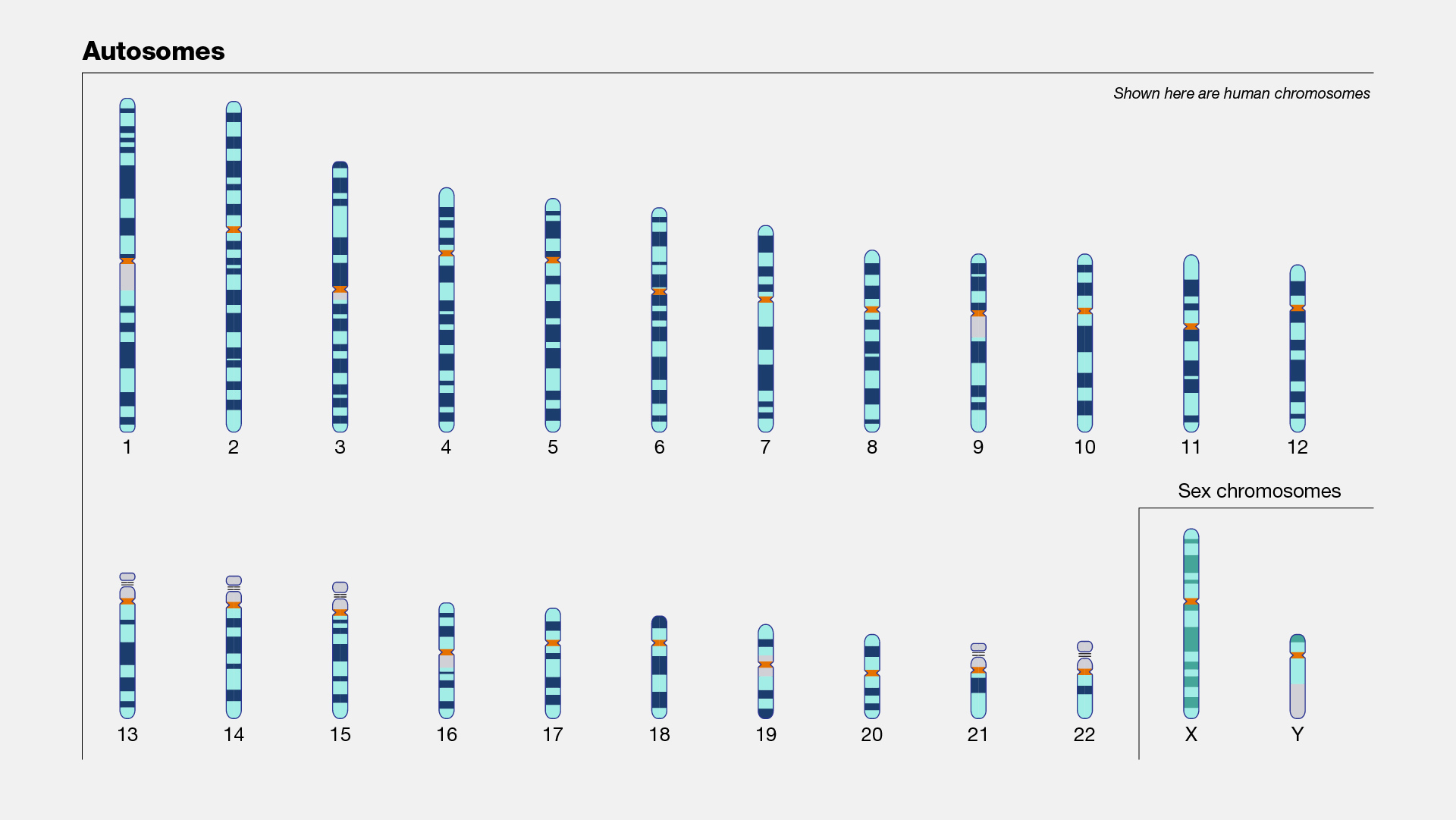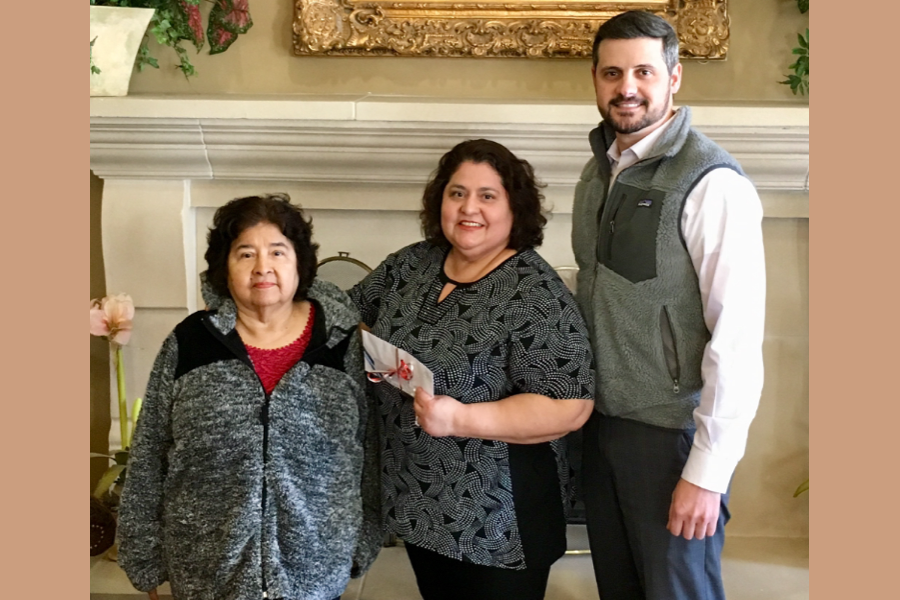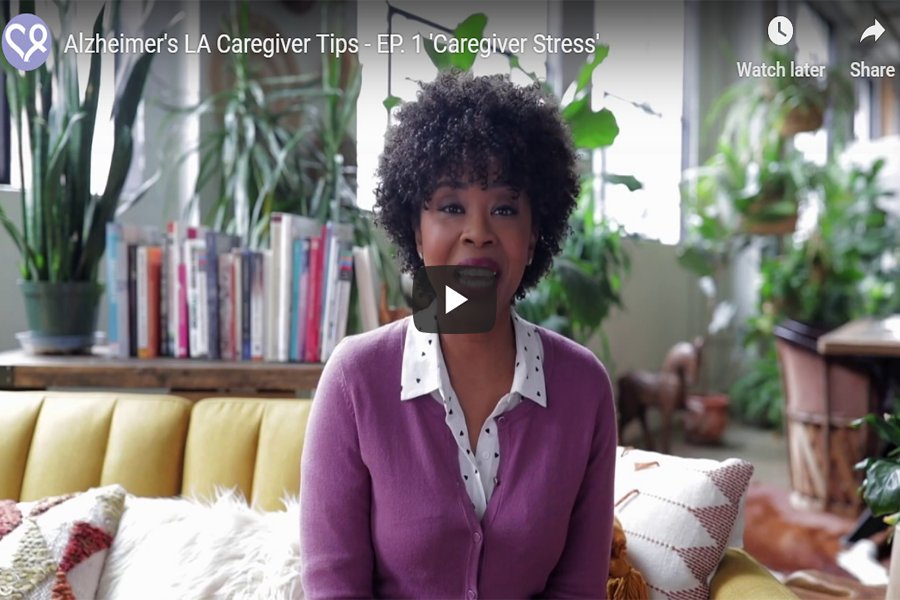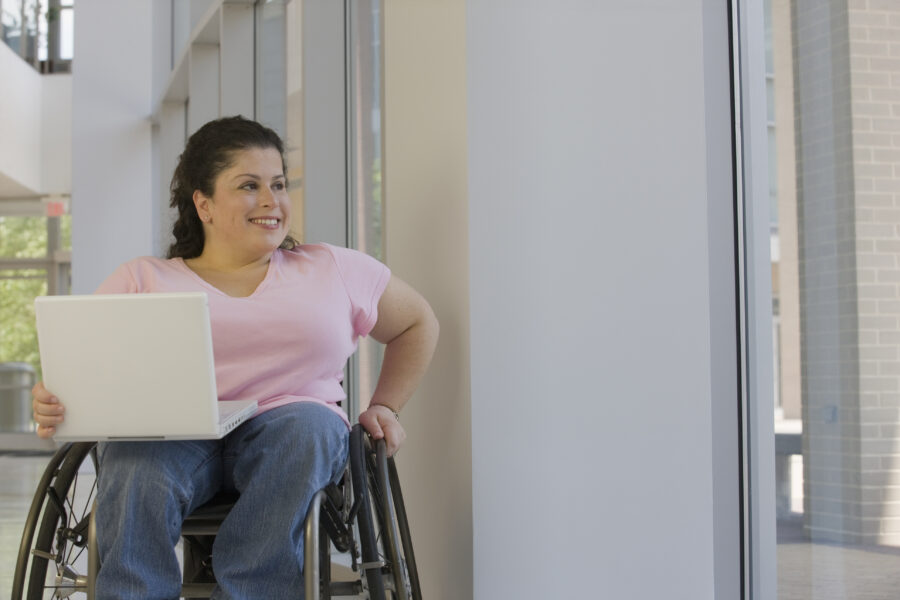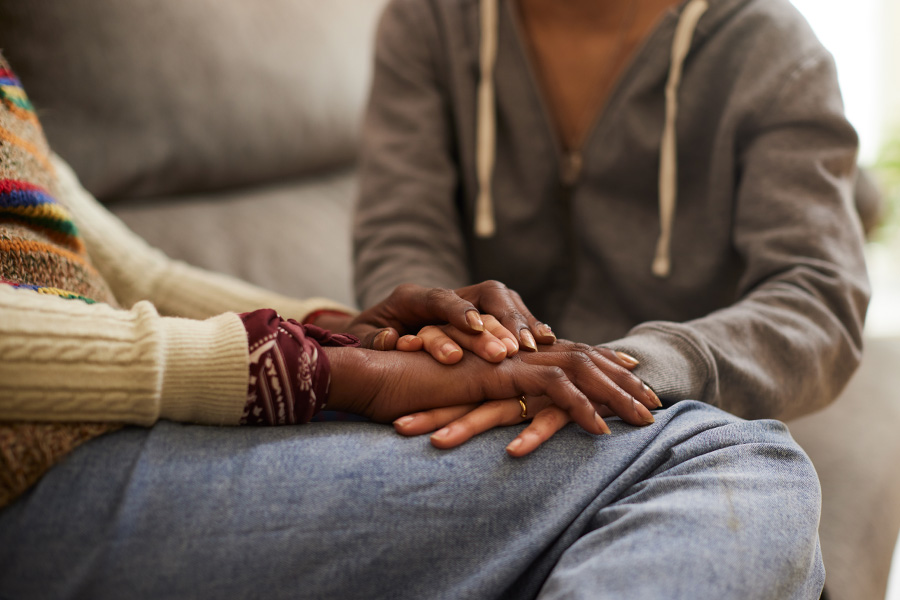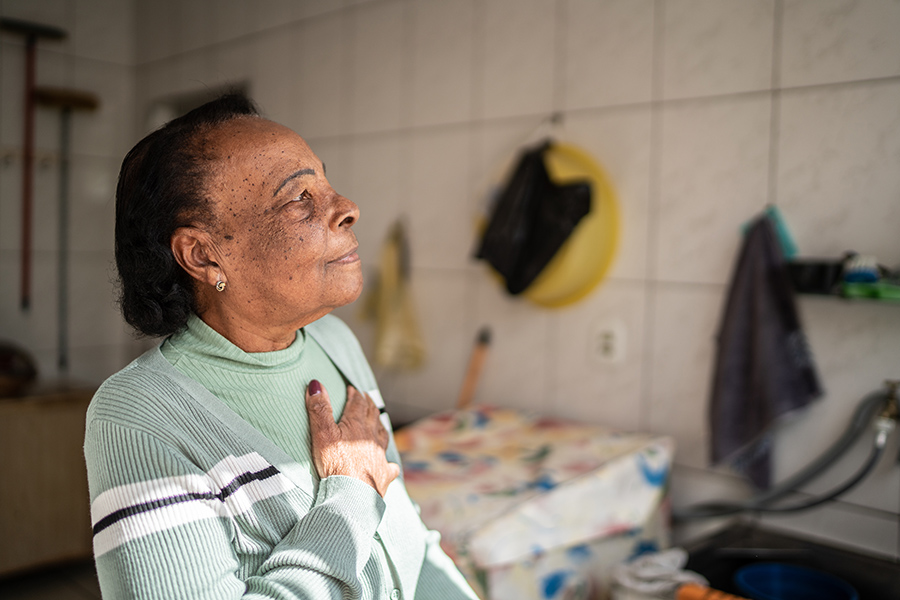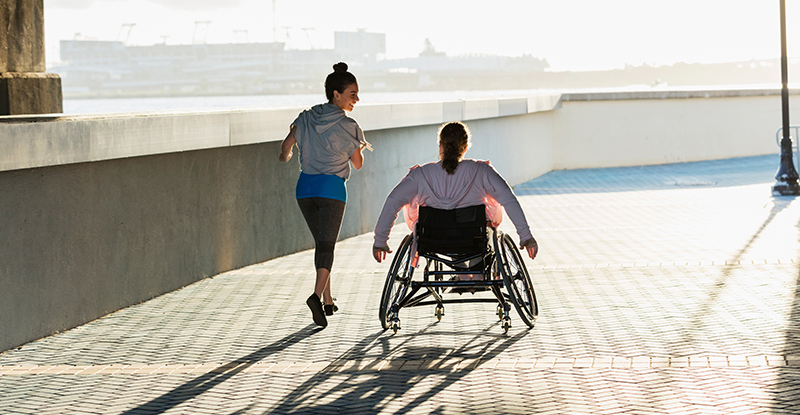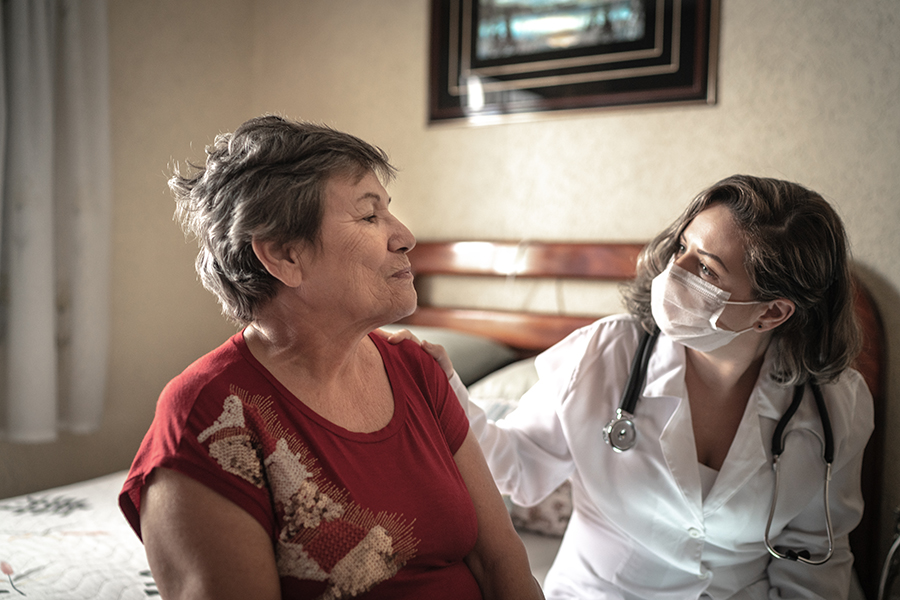Down syndrome (DS) is the most common chromosomal condition diagnosed in the United States, with 6,000 babies born in the U.S. with DS each year. Despite misconceptions about quality of life, people with Down syndrome span all ages, living on average at least 60 years. Some people with DS thrive into their 80s!
Many adults with Down syndrome enjoy independence, have jobs and relationships, and live fulfilling lives. Routine medical care is particularly important with this population, who are at higher risk for some health complications beginning in childhood, including incontinence, gastrointestinal problems, sleep apnea, obesity, Alzheimer’s disease, leukemia and others.
What is Down Syndrome?
Down syndrome is an autosomal trisomy (three copies of a chromosome instead of the typical two). The “tri” in autosomal trisomy means three. Individuals with Down syndrome have three copies of chromosome 21, the smallest autosomal chromosome with the fewest genes.
It is one of the few trisomies that results in survivable live births, and the only trisomy with a near-full life expectancy. Let’s back up and explore what this means in more detail.
A “karotype” is an individual’s complete set of chromosomes. A typical human karotype contains two meters of DNA, organized into 23 pairs of chromosomes (46 total chromosomes). 23 chromosomes are provided by each genetic parent and are paired during conception. These 23 chromosomes are broken down into autosomes and sex chromosomes.
Humans have 22 pairs of autosomes and one pair of sex chromosomes (typically XX or XY). Autosomes are numbered roughly in relation to their sizes. The largest autosome — chromosome 1 — has approximately 2,800 genes, while chromosome 22 — initially assumed to be the smallest autosome — has approximately 750 genes. However, it was later discovered that chromosome 21 is actually smaller than chromosome 22. In fact, chromosome 21 is the smallest of the autosomes and likely contains around 400 genes. Chromosome 21 represents approximately 1%-2% of an individual’s DNA.
What Causes Down Syndrome?
The cause of Down syndrome is still unknown. Age is the only factor that has been linked to an increased chance of having a baby with Down syndrome, however, due to higher birth rates in younger women, the majority of children with Down syndrome are born to women under 35 years of age. There is no definitive scientific research that indicates that Down syndrome is caused by environmental factors or the parents’ activities before or during pregnancy.
Physical Characteristics of Individuals with Down Syndrome
While individuals with Down syndrome share some common physical features, it’s crucial to note that each person with DS is a completely unique individual, with unique capabilities, strengths and weaknesses, interests and aspirations. Physically, a person with DS looks more like their family than another individual with the condition. Mentally, spiritually, emotionally, and in every other capacity, a person with DS is a completely unique individual in every way.
Some common physical features of Down syndrome include:
- A flattened facial profile, especially the bridge of the nose
- Small facial features (including head, ears and mouth)
- Almond-shaped eyes with an upward slant, and tiny white spots on the iris of the eye
- A larger tongue that tends to stick out of the mouth
- A short neck with excess skin at the back of the neck
- Small hands and feet
- A single deep crease across the palm of the hand (palmar crease)
- Small pinky fingers that sometimes curve toward the thumb
- Poor muscle tone or loose joints
- Shorter height
In addition to the physical similarities, children with DS may also have varying degrees of intellectual and developmental disabilities (IDDs) which affect language and motor skills. For many children, the level of impairment is mild to moderate and varies from person to person. Common problems may include:
- Impulsive behaviors
- Poor judgment
- Short attention span
- Slow learning
- Delayed language and speech development
Additional medical complications are also fairly common with Down Syndrome. Individuals are at higher risk for endocarditis and other heart problems; intestinal problems such as gastrointestinal blockages; ENT (ear-nose-throat) complications compounded by a smaller facial structure and larger tongue, including ear infections, sleep apnea, and hearing/vision impairments; and additional conditions such as incontinence, obesity, skeletal weakness in the upper spine, Alzheimer’s disease, and leukemia.
Types of Down Syndrome
There are three types of Down syndrome:
- Trisomy 21 (full chromosome autosomal trisomy): Approximately 95% of people with Down syndrome have Trisomy 21. With this type of Down syndrome, each cell in the body has three separate copies of chromosome 21 instead of the usual two copies.
- Translocation Down syndrome (segmental and translocation aneuploidies): This type accounts for approximately 3% of people with Down syndrome. It occurs when an extra piece (segment) of chromosome 21 – or a whole extra chromosome 21 – is present, but that segment/chromosome is attached or “translocated” to a different chromosome rather than chromosome 21. Often, this partial or whole copy is attached to chromosome 14.
- Mosaic Down syndrome (mosaic aneuploidies): This type affects about 2% of the people with Down syndrome. For children with mosaic Down syndrome, some of their cells have three copies of chromosome 21, but other cells have the typical two copies of chromosome 21. Children with mosaic Down syndrome may have the same features as other children with Down syndrome. However, they may have fewer features of the condition due to the presence of some cells with a typical number of chromosomes.
Capabilities of Individuals with Down Syndrome
There is no way to know what the future holds for anyone, however people with Down syndrome are just like everyone else. They have similar dreams and goals, and they want to have successful careers and families. They can drive, go to work, go to college, go on dates, get married, participate in sports and contribute to society. Babies, children and adults with Down syndrome are just like their typical peers – with all the same aspirations and desires – and they need all the same love and care.
Up until the 1970-80s, harmful myths persisted about individuals with Down syndrome. In the United States, people with DS were institutionalized – suffering lack of access to education and medical care, and sometimes neglect and abuse – and they often died an early death. For example, in 1960 the average life expectancy of a child with Down syndrome was only 10 years old. It was assumed that a person with DS would never learn how to speak properly, let alone read and write. It was also assumed that they would not walk properly or dress, feed or take care of themselves; they were not allowed to attend public schools; and most Americans believed they should not be allowed in public spaces such as movie theaters, malls or parks.
The human and civil rights movement of the 1970s and the 1980s precipitated significant life changes for individuals with Down syndrome. Institutions were deemed inhumane and closed down, and the U.S. required by law (per the Individuals with Disabilities Education Act, or IDEA) that public schools accept and provide a free, appropriate education to individuals with disabilities. This education was required to meet their unique needs and prepare them for further education, employment, and independent living. IDEA was one of many legal changes that transpired in the 70s and 80s to acknowledge the dignity of individuals with DS, protect their rights to education and medical care, and define these individuals as worthy of fundamental human and civil rights.
People with Down syndrome are capable of achieving anything. Today you can find individuals with DS thriving in careers as professional athletes, Olympic athletes, accomplished musicians, mainstream actors, politicians, producers, writers, teachers, designers, models and many others.
Treatments and Outcomes
Services early in life will often help babies and children with Down syndrome to improve their physical and intellectual abilities. Most of these services focus on helping children with Down syndrome develop to their full potential. These services include speech, occupational and physical therapy, and they are typically offered through early intervention programs in each state. Children with Down syndrome may also need extra help or attention in school, although many children are included in regular classes.
Today, the average lifespan of someone with Down syndrome is 60 years old. In the last three decades since the dismantling of institutions, and with the advent of legislation such as the Individuals with Disabilities Education Act and the American with Disabilities Act, lifespan is not the only thing that has dramatically changed. People with Down syndrome have IQs that have increased on average by 20 points, and the overwhelming majority learn how to read and write. Most are attending public school, and some are graduating with a typical degree. There are a handful who have gone on to achieve college degrees. People with DS are increasingly holding down jobs, pursuing careers and relationships, and living independent lives.
To hear directly from parents with children who have Down syndrome and other conditions, explore more articles below:
- What’s It’s Like to Father a Child with Down Syndrome
- When Down Syndrome and Autism Collide
- What it’s Like to Have a Child with Down Syndrome and Autism: Video
- Opening the Door for Inclusion on the Playground
- Why Parents Love Sign Language for Kids with Special Needs
- Adopting a Child with Down Syndrome
- What’s True About Every Person with Down Syndrome
- Down Syndrome Awareness Grows Up
For more information and resources about Down syndrome, visit:
- CDC: The Centers for Disease Control provides a data-based overview on DS, including Facts About Down Syndrome, Data and Statistics on Down Syndrome, and Growth Charts for Children with Down Syndrome.
- Down Syndrome Research Foundation (DSRF): DSRF initiates research studies to better understand the learning styles of those with Down syndrome.
- GiGi’s Playhouse: GiGi’s Playhouse provides free educational, therapeutic-based, and career development programs for individuals with Down syndrome, their families, and the community, through a replicable playhouse model.
- Global Down Syndrome Foundation: This foundation is dedicated to improving the lives of people with Down syndrome through research, medical care, education and advocacy.
- National Association for Down Syndrome: The National Association for Down Syndrome supports all individuals with DS in achieving their full potential. They seek to help families, educate the public, address social issues and challenges, and facilitate active participation.
- National Down Syndrome Society (NDSS): NDSS seeks to increase awareness and acceptance of those with Down syndrome.
Sources include:
- Centers for Disease Control
- Genome Biology
- National Institutes of Health
- Genome.gov
- National Library of Medicine: Genetics, Chromosomal Abnormalities
- National Library of Medicine: Molecular Genetics of Human Chromosome 21
- National Library of Medicine: Proteins of Human Chromosome 21
- National Down Syndrome Society
- Special Olympics
- Global Down Syndrome Foundation







